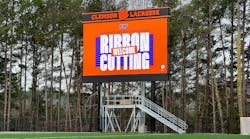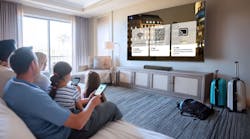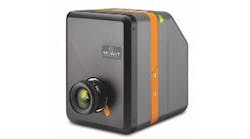The Heart of Hong Kong’s CBD has an ordinary name considering its remarkable history. Unlike London, there is no reference to a King, Queen or even a hallowed British Saint. No, the heart of Hong Kong is simply called ‘Central’, as if an obvious reference to its geography was enough to encapsulate this remarkable district. Since the inception of British rule, ‘Central’ has evolved into a thriving metropolis; a place where ancient Feng Shui arts shape modern architecture and historic structures are nestled amidst dazzling skyscrapers. A significant part of Central is owned by one landlord with an equally obvious appellation and a 124-year history -- ‘Hong Kong Land’ own a dozen of the most well-known prestige buildings including the island’s finest Hotel.
Amongst this precinct of continuously upgraded and immaculately managed edifices stands one with yet another uncomplicated yet evocative and confident name; ‘The Landmark’ is one of Hong Kong’s best known bastions of luxury retail and home to numerous iconic brands. It has also been the gathering place for well-heeled shoppers for over twenty five years. Over the past decade, there has been a rapid change in the retail environment. A sign on a stone façade will no longer suffice to identify a prestige store and the use of extroverted façade designs of glass and light have become de rigueur. One by one, these renowned brands in the golden footprint of Central have adopted ever more spectacular façade designs by way of distinguishing themselves and their brand from other labels as well as in response to abrupt changes in shopper demographics.
In 2012, approximately 48 million overseas travellers visited Hong Kong, of which 35 million originated from mainland China. Ten years ago there were less than half this many visitors to the city which currently has a population of 7.5 million people. As a result, high-end retail has been transformed due to a seismic shift both in the sheer number of mainland visitors and their purchasing power as well as their expectations of the retail experience.
Designers specialising in retail façades seek to both capture some vital element of the brand they serve and represent it physically in light and form, preferably with a unique twist. Consequently, the façades for the new stores in Central are becoming metaphors for the iconic brands they promote. The most successful façades are those that are so emblematic of the brand that they are instantly recognisable, even without a logo. Competition amongst retail brands has long contributed to the ambiance of the world’s greatest cities. However, unlike many of these cities, Central is less constrained by heritage and more driven by spectacle which has resulted in some truly spectacular building illuminations.
Illumination Physics are proud to have been selected to undertake the supply and installation of some of these lighting designs, more often than not requiring custom luminaire design.
A few of the newest retail façades have been constructed from several transparent and semi-transparent layers, with the cavities between the layers functioning as light boxes. Illumination Physics have illuminated many similar façades using very compact yet high powered custom LED luminaires designed to fit into these increasingly common narrow cavities.
Ergonomics and light output are not the only challenges with such designs. Heat build-up is also a major consideration because of solar gain, the lack of ventilation and the heat produced from the LEDs themselves. Convective cooling by air exchange was considered but abandoned due to long-term maintenance issues associated with moving air through the façade over many years.
Illumination Physics has solved the heat issue by utilising one of their ‘Gulf Spec’ products which have been designed to operate in harsh environments and extreme temperatures of up to 75 degrees Celsius. CFD analysis of the anticipated thermal behaviour within the façades may provide an indication of the maximum attained temperature, however given Illumination Physics’ experience in Hong Kong and similar climates provides us with technical references from the recent past. As a precaution, added heat sensor systems monitor and protect the lighting system.
The Illumination Physics ‘Gulf Spec’ luminaires contain no electronics whatsoever and the temperature sensitive drivers are located remotely in an air-conditioned environment inside the store. This is a deliberate policy designed to limit the number of issues that can occur with the equipment placed behind the glass where gaining access is very difficult.
During the construction of the façade elements, every aspect of the lighting system are tested prior to and following every stage of the assembly. The LED is installed into the façade panels in the factory and shipped to the site for installation. During the on-site assembly process, the panels of the lighting system are activated so that any inadvertent damage to cables and connections during the heavy handling can be immediately detected and rectified.
If the lighting system is to be controlled via DMX, the control system ideally should have individual control over every separate fixture so that any imbalances can be tuned away. Since white light is often used for indirect illumination, the colour rendering and colour temperature of the LEDs is tightly specified in Illumination Physics design to achieve the desired look. Binning of LED for consistency is a subject still poorly understood in the market. Illumination Physics takes great care to advise our clients how to avoid unwanted colour aberrations, many of which are often predictable.
All these elements were considered when the new Tiffany and Co. façade was designed, constructed and illuminated on the 1st of November 2013. The store now dominates views of The Landmark from one of the busiest intersections in the heart of Central.
Amongst this precinct of continuously upgraded and immaculately managed edifices stands one with yet another uncomplicated yet evocative and confident name; ‘The Landmark’ is one of Hong Kong’s best known bastions of luxury retail and home to numerous iconic brands. It has also been the gathering place for well-heeled shoppers for over twenty five years. Over the past decade, there has been a rapid change in the retail environment. A sign on a stone façade will no longer suffice to identify a prestige store and the use of extroverted façade designs of glass and light have become de rigueur. One by one, these renowned brands in the golden footprint of Central have adopted ever more spectacular façade designs by way of distinguishing themselves and their brand from other labels as well as in response to abrupt changes in shopper demographics.
In 2012, approximately 48 million overseas travellers visited Hong Kong, of which 35 million originated from mainland China. Ten years ago there were less than half this many visitors to the city which currently has a population of 7.5 million people. As a result, high-end retail has been transformed due to a seismic shift both in the sheer number of mainland visitors and their purchasing power as well as their expectations of the retail experience.
Designers specialising in retail façades seek to both capture some vital element of the brand they serve and represent it physically in light and form, preferably with a unique twist. Consequently, the façades for the new stores in Central are becoming metaphors for the iconic brands they promote. The most successful façades are those that are so emblematic of the brand that they are instantly recognisable, even without a logo. Competition amongst retail brands has long contributed to the ambiance of the world’s greatest cities. However, unlike many of these cities, Central is less constrained by heritage and more driven by spectacle which has resulted in some truly spectacular building illuminations.
Illumination Physics are proud to have been selected to undertake the supply and installation of some of these lighting designs, more often than not requiring custom luminaire design.
A few of the newest retail façades have been constructed from several transparent and semi-transparent layers, with the cavities between the layers functioning as light boxes. Illumination Physics have illuminated many similar façades using very compact yet high powered custom LED luminaires designed to fit into these increasingly common narrow cavities.
Ergonomics and light output are not the only challenges with such designs. Heat build-up is also a major consideration because of solar gain, the lack of ventilation and the heat produced from the LEDs themselves. Convective cooling by air exchange was considered but abandoned due to long-term maintenance issues associated with moving air through the façade over many years.
Illumination Physics has solved the heat issue by utilising one of their ‘Gulf Spec’ products which have been designed to operate in harsh environments and extreme temperatures of up to 75 degrees Celsius. CFD analysis of the anticipated thermal behaviour within the façades may provide an indication of the maximum attained temperature, however given Illumination Physics’ experience in Hong Kong and similar climates provides us with technical references from the recent past. As a precaution, added heat sensor systems monitor and protect the lighting system.
The Illumination Physics ‘Gulf Spec’ luminaires contain no electronics whatsoever and the temperature sensitive drivers are located remotely in an air-conditioned environment inside the store. This is a deliberate policy designed to limit the number of issues that can occur with the equipment placed behind the glass where gaining access is very difficult.
During the construction of the façade elements, every aspect of the lighting system are tested prior to and following every stage of the assembly. The LED is installed into the façade panels in the factory and shipped to the site for installation. During the on-site assembly process, the panels of the lighting system are activated so that any inadvertent damage to cables and connections during the heavy handling can be immediately detected and rectified.
If the lighting system is to be controlled via DMX, the control system ideally should have individual control over every separate fixture so that any imbalances can be tuned away. Since white light is often used for indirect illumination, the colour rendering and colour temperature of the LEDs is tightly specified in Illumination Physics design to achieve the desired look. Binning of LED for consistency is a subject still poorly understood in the market. Illumination Physics takes great care to advise our clients how to avoid unwanted colour aberrations, many of which are often predictable.
All these elements were considered when the new Tiffany and Co. façade was designed, constructed and illuminated on the 1st of November 2013. The store now dominates views of The Landmark from one of the busiest intersections in the heart of Central.




